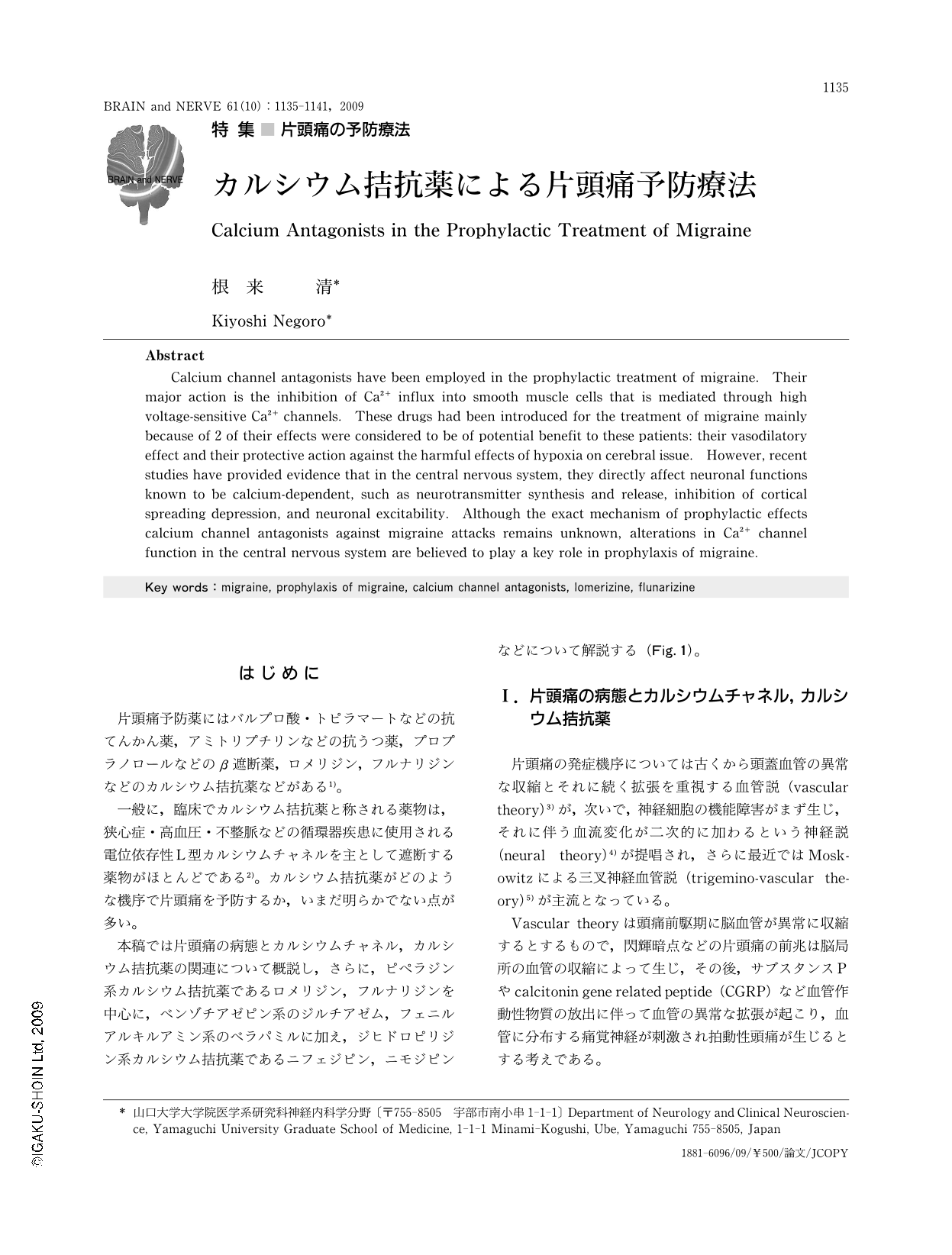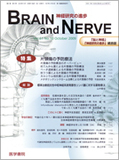Japanese
English
- 有料閲覧
- Abstract 文献概要
- 1ページ目 Look Inside
- 参考文献 Reference
はじめに
片頭痛予防薬にはバルプロ酸・トピラマートなどの抗てんかん薬,アミトリプチリンなどの抗うつ薬,プロプラノロールなどのβ遮断薬,ロメリジン,フルナリジンなどのカルシウム拮抗薬などがある1)。
一般に,臨床でカルシウム拮抗薬と称される薬物は,狭心症・高血圧・不整脈などの循環器疾患に使用される電位依存性L型カルシウムチャネルを主として遮断する薬物がほとんどである2)。カルシウム拮抗薬がどのような機序で片頭痛を予防するか,いまだ明らかでない点が多い。
本稿では片頭痛の病態とカルシウムチャネル,カルシウム拮抗薬の関連について概説し,さらに,ピペラジン系カルシウム拮抗薬であるロメリジン,フルナリジンを中心に,ベンゾチアゼピン系のジルチアゼム,フェニルアルキルアミン系のベラパミルに加え,ジヒドロピリジン系カルシウム拮抗薬であるニフェジピン,ニモジピンなどについて解説する(Fig.1)。
Abstract
Calcium channel antagonists have been employed in the prophylactic treatment of migraine. Their major action is the inhibition of Ca2+ influx into smooth muscle cells that is mediated through high voltage-sensitive Ca2+ channels. These drugs had been introduced for the treatment of migraine mainly because of 2 of their effects were considered to be of potential benefit to these patients: their vasodilatory effect and their protective action against the harmful effects of hypoxia on cerebral issue. However,recent studies have provided evidence that in the central nervous system,they directly affect neuronal functions known to be calcium-dependent,such as neurotransmitter synthesis and release,inhibition of cortical spreading depression,and neuronal excitability. Although the exact mechanism of prophylactic effects calcium channel antagonists against migraine attacks remains unknown,alterations in Ca2+ channel function in the central nervous system are believed to play a key role in prophylaxis of migraine.

Copyright © 2009, Igaku-Shoin Ltd. All rights reserved.


